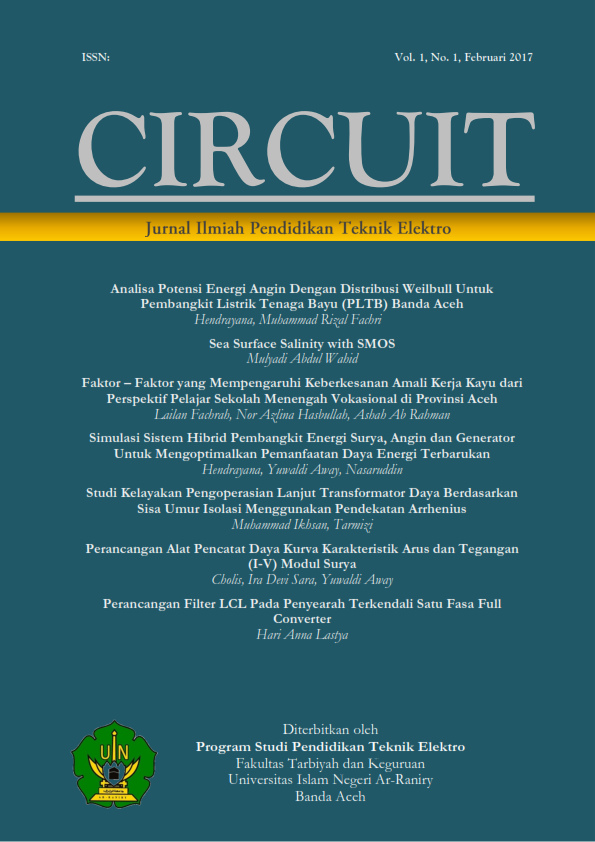SISTEM PAKAR DIAGNOSA KARAKTERISTIK PENYALAHGUNAAN NARKOBA MENGGUNAKAN METODE FORWARD CHAINING
DOI:
https://doi.org/10.22373/crc.v4i2.7105Keywords:
Expert System, Drug User Characteristics, Forward Chaining MethodAbstract
This research is motivated by the number of drug cases in Indonesia, so that the number of users in 2017 reached 3,376,115 users in the 10-59 years age group. This is a very serious problem, and to prevent this from becoming a more serious problem it is recommended that parents, neighbors and relatives need to take the first step by identifying drug users through their characteristics. This study aims to build an expert system to diagnose the characteristics of drug users using the forward chaining method. The research method used is Research & Development and for system testing using black box testing techniques. Then the user acceptance of the system is tested and the results obtained are positive responses with a percentage rate of 86%, which means that the expert system that is designed is very feasible so that it can provide convenience.References
Herindrasti, V. L. S. (2018). "Drug-free ASEAN 2025 : Tantangan Indonesia dalam Penanggulangan Penyalahgunaan Narkoba". Jurnal Hubungan Internasional. Vol.7 No. 1.
Penelitian, P., Informasi, D. D. A. N., Nasional, B. N., & Indonesia, R. (2017). "Survei Nasional Penyalahgunaan Narkoba Di 34 Provinsi Tahun 2017 Pusat Penelitian Data Dan Informasi Badan Narkotika Nasional Republik Indonesia". Jakarta.
hellosehat.com. (2019). “Anak Diam-diam Menggunakan Narkoba, Ini Yang Harus Ortu Lakukan”.https://hellosehat.com/parenting/tips-parenting/anak-menggunakan-narkoba-anak-memakai-narkoba/. [Accessed: 10 Juni 2019].
Ghozali, M. F., & Eviyanti, A. (2016). "Sistem Pakar Diagnosis Dini Penyakit Leukemia Dengan Metode Certainty Factor". Jawa Timur: Universitas Muhammadiyah Sidoarjo.
HIKMAT.A, M. M. (2018). “Faktor Yang Memungkinkan Penyalahgunaan Narkoba Pada Siswa SMAN Akreditas A Se-kota Makassar Tahun 2018”. Makassar: Universitas Hasanuddin.
Helviza, Ira, Zulihar Mukmin dan Amirullah. (2016). “Kendala-kendala Badan Narkotika Nasional (BNN) Dalam Penanggulangan Penyalahgunaan Narkotika di Kota Banda Aceh”. Banda Aceh : Universitas Syiahkuala.
Kompas.com. (2016). “Ini 53 Ciri Umum Pengguna Narkoba Menurut BNN”. https://megapolitan.kompas.com/read/2016/08/29/19404861/ini.53.ciri.umum.pengguna.narkoba.menurut.bnn?page=all. [Accessed: 16 Juni 2019].
detikNews.com. 2016. “BNN Ungkap Ciri Pengguna Narkoba : Sering ke Diskotek, Mal, dan Lama di Kamar Mandi”. https://news.detik.com/berita/d-3286542/bnn-ungkap-ciri-pengguna-narkoba-sering-ke-diskotek-mal-dan-lama-di-kamar-mandi. [Accessed: 16 Juni 2019].
Hayaty, M., & Irawan, R. F. (2018). "khazanah informatika Perancangan Sistem Penunjang Keputusan untuk Menentukan Jabatan Pengurus Organisasi Menggunakan Kombinasi Algoritma Simple Multi Attribute Rating Technique ( SMART ) dan Forward Chaining". Yogyakarta: Universitas AMIKOM Yogyakarta.
Sugiyono. (2017). “Metode Penelitian Bisnis Pendekatan Kuantitatif Kualitatif Kombinasi dan R&D”. Bandung: Alfabeta.
Wiro Sasmito, Ginanjar. 2017. “Penerapan Metode Waterfall Pada Desain Sistem Informasi Geografis Industri Kabupaten Tegal”. Indonesia: Politeknik Harapan Bersama.
Downloads
Published
Issue
Section
License
Authors who publish in CIRCUIT: Jurnal Ilmiah Pendidikan Teknik Elektro agree to the following terms:
- Authors retain copyright and grant the journal right of first publication with the work licensed under a Creative Commons Attribution-ShareAlike 4.0 International License (CC BY-SA 4.0) that allows others to share and adapt the work with an acknowledgement of the authorship and initial publication in this journal
- Authors are able to enter into separate, additional contractual arrangements for the non-exclusive distribution of the journal's published version of the work (e.g., post it to an institutional repository or publish it in a book), with an acknowledgment of its initial publication in this journal.
- Authors are permitted and encouraged to post their work online (e.g., in institutional repositories or on their website) prior to and during the submission process, as it can lead to productive exchanges, as well as earlier and greater citation of published work. (See The Effect of Open Acces)

